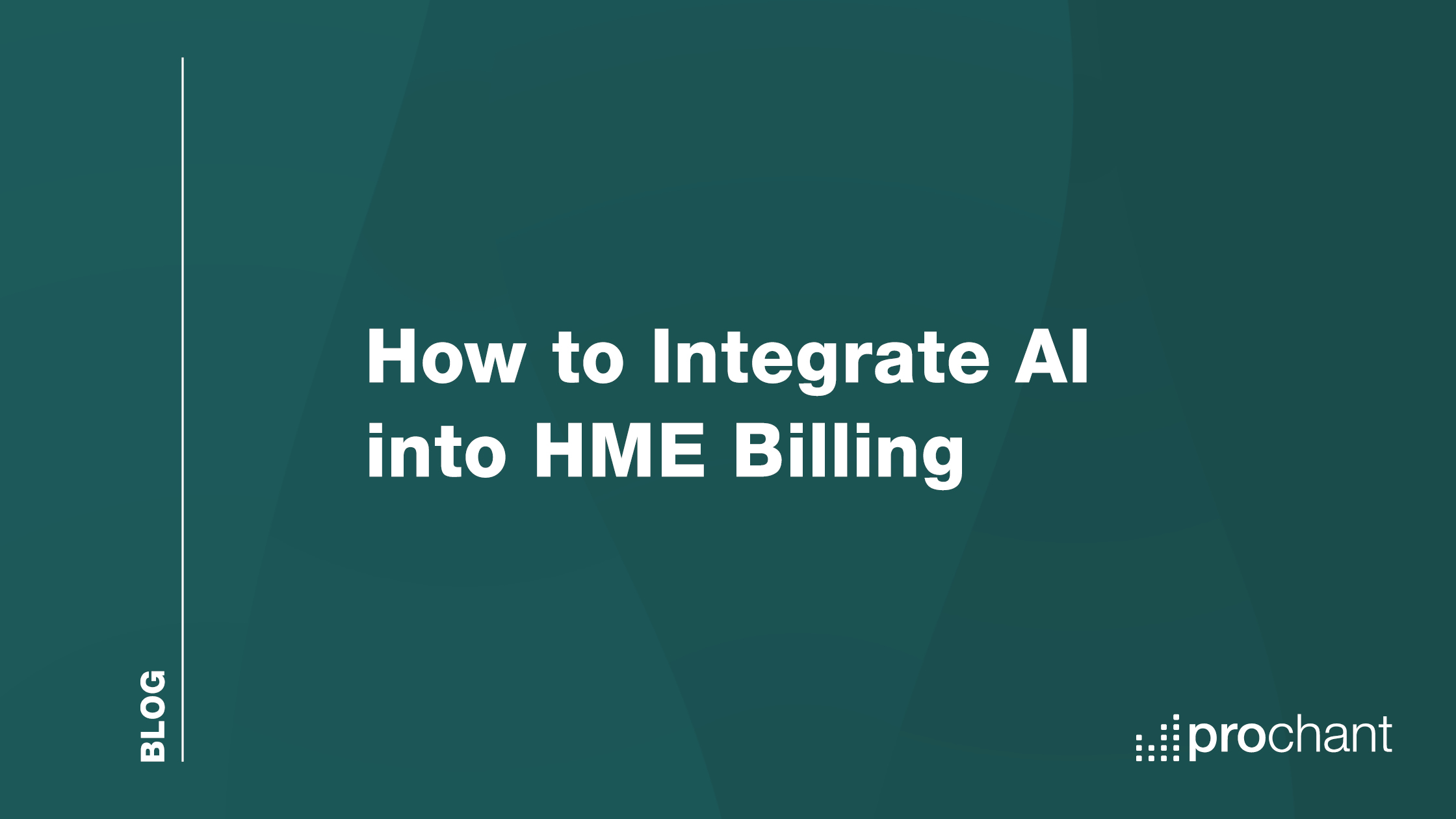
In recent years, there has been no shortage of discussions surrounding the various methods and benefits associated with introducing Artificial Intelligence (AI) into medical billing workflow. Incorporating AI into HME billing gives providers an opportunity to markedly enhance the efficiency of their revenue cycle management.
Unfortunately, there isn’t a one-size-fits-all answer for every performance problem providers experience. To optimize your results, integration of AI-driven HME revenue cycle solutions requires significant planning and execution leading up to implementation. Here are our four key steps on how to properly introduce AI into your HME billing workflow:
Step 1: Evaluate Your Current Billing
Start by assessing your current end-to-end medical billing process to pinpoint any inefficiencies or areas that need to be improved. The objective of this evaluation is to locate places where AI can make the most substantial difference. Take these areas into account: minimizing errors, automating manual tasks, and improving the entire billing experience for patients and staff.
Step 2: Choose the Appropriate AI Solution
After you’ve identified the distinct areas of your billing process that can be improved by AI, research viable AI-driven HME revenue cycle management solutions. During this stage, it’s imperative to be conscious of factors like ease of integration, scalability, and compatibility with your current billing system. Consult various technology vendors to decide the ideal fit for your organization’s specific needs and budget.
Step 3: Track and Optimize Integration
Once your AI solution is in place, diligently track its performance and the impact it has on your HME billing process. Collect input from staff and patients to pinpoint areas with potential to be improved or further optimized. Continuous performance monitoring enables you to maximize the advantages of AI integration and helps your organization quickly adapt to change.
Step 4: Prioritize Data Security
AI-driven HME billing solutions depend on extensive amounts of sensitive patient information. Make sure the solution you pick adheres to all pertinent regulations, such as HIPAA, and includes robust data security and compliance features that safeguard patient information. Opting for an HME revenue cycle management partner with HITRUST CSF or comparable certification also helps keep patient information secure.
Following these steps enable DME/HME providers to successfully implement AI into their billing workflows. Doing so leads to an enhanced billing process that is more efficient, precise, and patient-centered, resulting in improved financial performance and better patient care. With reduced administrative burdens and improved revenue management, AI offers significant opportunities for providers to improve their organization’s overall efficiency.
If you are interested in learning about Prochant’s intake, billing, or collections solutions for HME revenue cycle management, connect with us here today.
Prochant is the only AI-driven reimbursement service provider in the home-based care industry. We deliver focused revenue cycle management (RCM) solutions to healthcare providers with 7 wholly-owned global delivery centers. Our expertise lies in providing end-to-end RCM for home-based care, infusion, and specialty pharmacies, consistently delivering exceptional results to some of the leading healthcare providers in the country. We harness specialized automation technology and deep industry knowledge to streamline the time-consuming and expensive reimbursement process. As a result, we help healthcare providers accelerate their collections, increase revenue, and reduce operational costs while managing risk. Prochant is HITRUST certified, the gold standard for HIPAA security.
